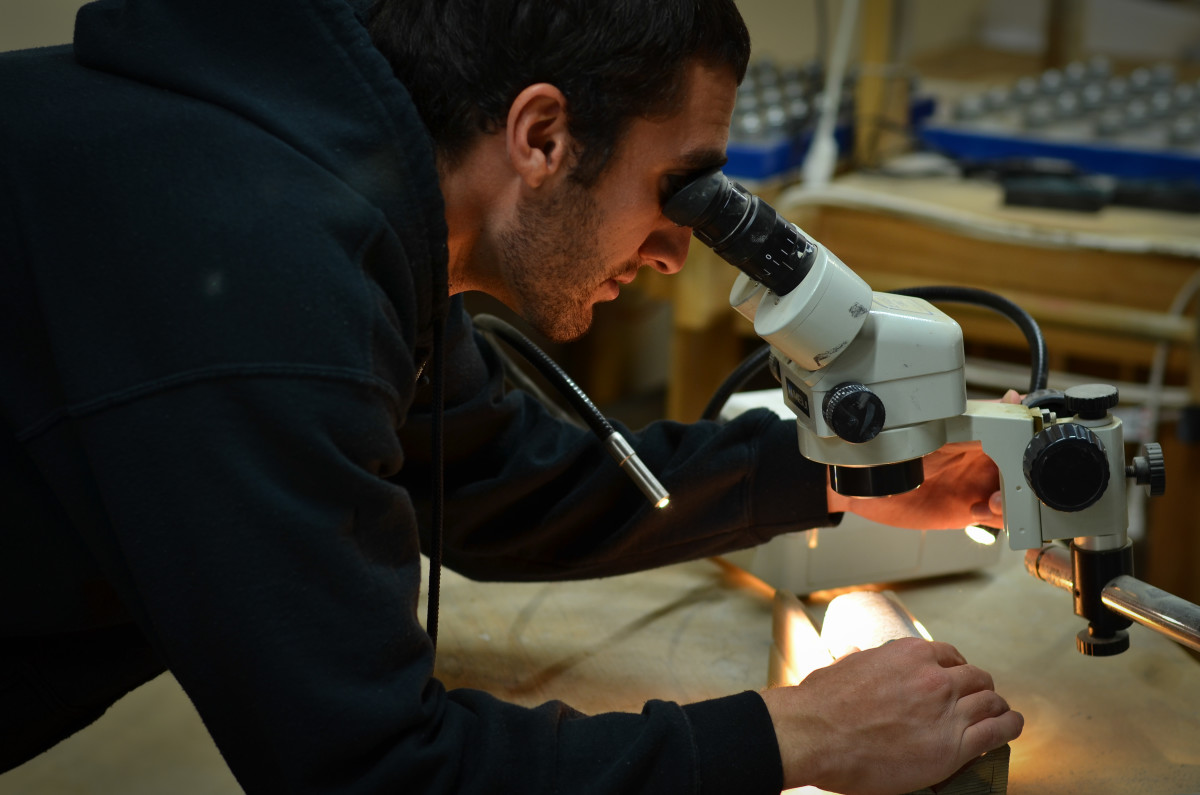Published March 2, 2021
Critical minerals like Antimony get a lot of attention. But why?
Minerals are a key part of our everyday lives. Without them we wouldn’t have iPhones, safe bridges to drive on, engines for our cars or a well-prepared military to keep us safe. However, the U.S. depends on foreign countries for half of the key minerals we use and our reliance on foreign nations for mineral resources has doubled in the last twenty years. This isn’t because the minerals do not exist in our country but because we aren’t currently tapping into some of the resources available to us.
In 2017, the Department of the Interior declared 35 minerals vital to U.S. interests based on our economic and national security needs. The list includes minerals that are key components of electronics, military equipment and weapons, transportation devices, energy generation and many other industries that help power and protect our great nation. As the COVID-19 pandemic has demonstrated, our dependence on foreign nations to access these minerals and other important technologies leaves our country vulnerable.
As recognized by multiple Presidential administrations and across political parties, our country’s economic growth, safety and way of life is dependent on our ability to access the minerals and metals that build satellites, missile defense systems, roads and bridges, computers, batteries and other technology. Yet, our dependance on other countries for materials and goods is creating vulnerability.
The critical mineral antimony is one of the metals we will produce if the Stibnite Gold Project moves forward, is included on the list of 35 Critical Minerals because it is essential to the energy, technology, and defense industries. Right now, the U.S. gets most of this mineral from China and Russia – which controls more than 80 percent of the world’s antimony production. Recent headlines regarding China’s desire to limit exports of rare earth minerals as well as the associated technology demonstrates that our dependency on China for critical minerals leaves the U.S. vulnerable.
Today, there is not an active antimony mine in America. The Stibnite Gold Project would be the only domestic source of mined antimony and the Project can help us take back control over one key part of our mineral future. As we continue to move through the permitting process, we are excited about our ability to bring production of this mineral back home to the U.S.
Want to learn more?
- Why Perpetua Resources Overview, 2021.
- US Geologic Survey Mineral Commodity Summary on Antimony. USGS, 2020.
- US Geologic Survey Critical Mineral Resource Report on Antimony. USGS, 2017.
- China explores rare earth export curbs to target U.S. defence [sic] industry. Reuters, February 2021.
- China May Ban Rare Earth Tech Exports on Security Concerns. Bloomberg News, 2021.
WHY ANTIMONY?
Our current way of life is dependent upon antimony. From wind and hydro turbines to semiconductors and cellphones, Antimony is a key component of the technology that powers our nation, that keeps us entertained and, on the move, as well as the technology that keeps our country safe.
Designated as one of the 35 critical minerals antimony is a very important mineral. It strengthens alloys and makes them resistant to corrosion and is a key ingredient in flame retardants. These properties make it a highly valuable mineral for our military and energy sectors, as well as preventing our homes and belongings from being fire hazards. In fact, Antimony has always been an important mineral for national defense. During World War II, young men could complete their military service up at Stibnite because antimony was critical to winning the war.
Antimony powers our nation: Solar panels, wind turbines, generators, motors, batteries, nuclear reactors and other energy sources that our nation depends upon contain antimony.
Antimony keeps us entertained and on the go: Smartphones, computers, semi-conductors, cars and other high-tech devices and machines depend on antimony to operate efficiently.
Antimony keeps our nation safe: Communication systems, night vision goggles, ammunition, tanks, infrared sensors, submarines, warships, camouflage, flame retardants and many other military technologies are dependent upon antimony to operate effectively.
Want to learn more?
- Antimony: Technical White Paper. Perpetua Resources
- US Geologic Survey Mineral Commodity Summary on Antimony. USGS, 2020.
- US Geologic Survey Critical Mineral Resource Report on Antimony. USGS, 2017.
- US Geologic Survey Minerals Yearbook Report on Antimony, USGS, 2016.
- General James, “Spider” Marks. Bringing Back Mining of Antimony to Help America’ Defense and Energy Industries. Washington Times, September 2020.
ANTIMONY FOR THE FUTURE GREEN GRID
We are also excited about the future of antimony and its use in next generation technology; technology that will allow us to achieve a more sustainable and efficient future. Recent research has demonstrated antimony’s applicability in molten-salt batteries, solid-state batteries, semi-conductors, and even self-healing solar panels.
Researchers at MIT have developed an antimony based liquid battery that will allow for the large-scale storage of renewable energy. The technology is currently being used at a Nevada data center and is in development as a tool for sustainable infrastructure development. This development will help renewable energy sources compete with traditional power plants and further increase the need for a domestic source of antimony.
Researchers from Texas, Germany, and India have also created various solid-state batteries that use Magnesium-Antimony and Silver-Antimony-Telluride compounds to capture and convert what is known as waste heat into electricity. Waste heat refers to the excess energy generated by power plants and other machines or processes that is not converted into usable energy and is typically released as heat. This new development will help reduce the amount of wasted energy and further support a more sustainable future.
Some experts have even theorized that antimony will replace silicon as the key semi-conductor for microchips. This is so, because 2D antimony is incredibly thin but also maintains a high charge mobility. Meaning, that the speed at which the charge moves through the antimony is very high. In fact, Antimony’s charge mobility is higher than that of silicon and thus will allow for microchips and next generation processors to become ever smaller.
Today, antimony plays a role in solar panels for its transparent, infrared insulating and electrical conduction properties. New research from the University of York has also demonstrated how antimony selenide may become a key component in solar panels. This compound is known as a solar absorbing material which means it can be used to turn light into electricity. What is unique about this semi-conducting compound is that it can self-heal. Keith Mckenna who helped discover this characteristic, compared antimony-selenide’s self-healing capability to a salamander’s ability to regenerate severed limbs. This self-healing characteristic is incredibly unusual and will likely allow the antimony-selenide compound to find widespread application in electronics, solar panels and other photovoltaics, as well as lighting and display systems.
Antimony’s future uses are ever evolving, and their implications for our future are exciting. What is the most notable, is that the critical mineral antimony will play a key role in achieving a more sustainable future powered by renewable energy and that the lack of a domestic supply of antimony threatens both our economic and national securities.
Want to learn more?
- Hallgarten & Company. Antimony Molten-Salt Batteries: The New Metal in Mass Storage. January 2020.
- Ambri’s Liquid Metal Battery to be Used at Desert Data Center in Nevada. Energy Storage News, November 2020.
- A Battery Made of Molten Metals: New Battery May Offer Low-Cost, Long-Lasting Storage for the Grid. MIT News, January 2016.
- First Tellurium-free thermoelectric modules for power generation for Low Temperatur [sic] Application. Leibniz Institute for Solid State and Materials Research Dresden, February 2021.
- Montalbano, Elizabeth. Antimony could replace silicon in next-gen processors. DesignNews, December 2019.
- Sinha, Amitabh. Bengaluru-based scientists develop material to tap waste heat generated by appliances and reuse it. The Indian Express, February 2021.
- Gatenby, Julie. Solar material can “self-heal” imperfections, new research shows. University of York, January 2021.
2021 UPDATE ON ANTIMONY: ANTIMONY REMAINS CRITICAL
President Joe Biden issued an Executive Order on February 24, 2021 to further study our reliance on foreign nations and the need for a more resilient supply chain. We are excited by the news because, like the President, we know access to critical minerals is key to a secure and sustainable future for all of us. The Administration will evaluate supply chain risks in four specific areas – semiconductor manufacturing, high-capacity batteries, critical minerals, and pharmaceuticals.
We fully anticipate this review will place a national focus on critical minerals, and antimony is a key mineral used in essential technology like semiconductors and large-scale battery storage. Currently, we are in the process of permitting America’s only mined source of this mineral.
The Stibnite Gold Project could supply approximately 30 percent of the American demand for antimony in the first six years of production. Today, we are reliant on China and Russia to meet our antimony demands.

